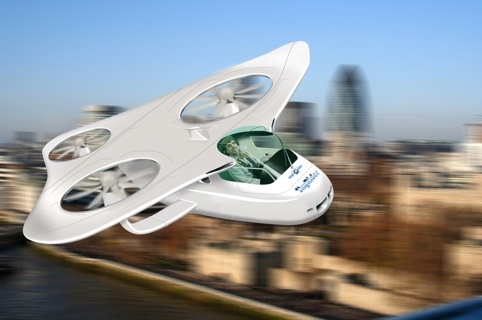The €4.2m (£3.76m), four-year myCopter project is a response to the increasing and unsustainable congestion on Europe’s roads.
‘Whenever I get stuck in traffic, I think what a stupid thing [it is] to be on the road when the space above me is free — so why not use the third dimension for personal transportation?’ Prof Heinrich Bülthoff, of the Max Plank Institute for Biological Cybernetics in Tübingen, told The Engineer.
‘The controlled airspace starts at 2,000ft, so there’s quite a bit of unrestricted airspace below that — which, of course, can only be used by pilots currently, but the idea is to make flying as easy as driving a car and that’s what we’re looking at.’
The project encompasses three separate arms: automation, human-machine interfaces and socio-economic environmental impact.
While Bülthoff admits that the project has drawn some raised eyebrows, he points out that automation is slowly finding its way into concept cars for increased safety on motorways and at junctions, for example, while the defence industry is currently looking into flying ‘flocks’ of UAV drones in formation.
But, undoubtedly, many problems will have to be tackled: aerospace legislation will have to be overhauled and infrastructure created for ‘parking’ the vehicles at commuters’ workplaces, without the need for an inordinate amount of training.

Energy considerations are also a factor — the group has calculated that an individual electric flying vehicle, with a counter-rotating rotor, would be able to cover 20km on battery power.
Although there are no plans to build prototype vehicles, simulations will play a large part in the outcome of the project, which runs to 2014.
One of the project partners is the Flight Science and Technology group at Liverpool University’s Department of Engineering, which has particular expertise in real-time flight simulation and high-performance computational fluid dynamics (CFD).
Likewise, another project partner, the German Aerospace Centre (DLR), hopes to develop human-machine interfaces that can be tested on their full-size, state-of-the-art Eurocopter EC135 fly-by simulator.
‘I’ve worked in basic research all my life, but I would like to put something back into society now — it’s a dream I’ve had for some time,’ Bülthoff said.
Comments on this story are now closed. To discuss it further, please go to its Forum discussion.




Poll: Should the UK’s railways be renationalised?
I think that a network inclusive of the vehicles on it would make sense. However it remains to be seen if there is any plan for it to be for the...